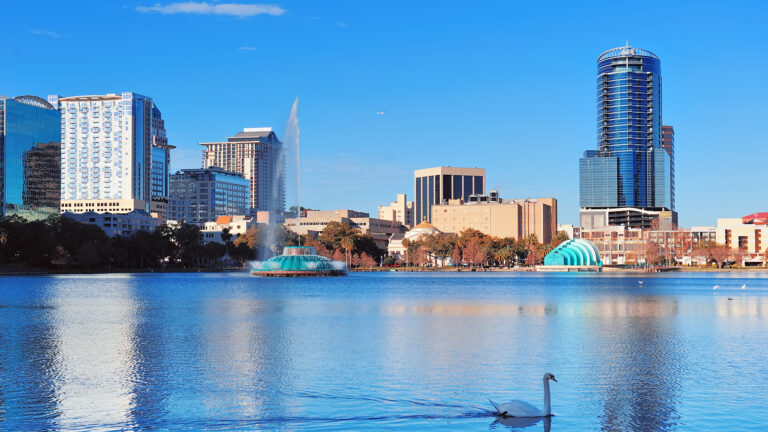By Mario Marroquin
In October, when the Teacher Retirement System of Texas’
sold its headquarters in downtown Austin for 3,600% of what it bought it for in
1973, the $108 million price tag wasn’t a surprise. Commercial real estate in
Central Texas and institutional investors’ appetite for property along the I-35
corridor that leads from Dallas Forth Worth to San Antonio is showing
comparatively strong demand as its population, employment and political pull grows.
In 1973, Texas Teachers paid $3 million for the building
located at 1000 Red River Street, two blocks from the state’s capitol in the ‘Weird’
City. Now the pension system, with nearly
$184.4 billion in assets under management, closed the sale of the 198,972-square-foot
office property at a very strategic time in Austin’s real estate history and
economy.
The buyer of the former HQ, a limited liability company
affiliated with Alexandria Real Estate Equities of Pasadena, California, plans
to market the property for a life science conversion while the retirement
system will relocate to the 700-acre redevelopment of the Robert Mueller
Municipal Airport in northeastern Austin.
“I believe it is prudent to make this move now and take
advantage of returns from Austin’s booming commercial real estate market,” TRS’s
Executive Director Brian Guthrie said in a statement. “A new
headquarters building will position TRS for success in serving our members in
the coming decades.”
The board of Texas
Teachers approved a $300 million program to
relocate within the city in September 2021. And after receiving backlash over
its lease at Trammell Crow’s Indeed Tower, the board agreed to move to 460,000
square feet of office space at Shorenstein Properties’ Alpha and MBD Bravo
buildings on Aldrich Street at the airport redevelopment led by Catellus
Development.
Rob Maxwell, a spokesperson for the retirement system told
Markets Group the new headquarters will include a fitness center, employee
break rooms and lactation rooms consistent with the current amenities at the
1000 River Street campus. However, TRS intends to lease a floor at its new HQ
where approximately 900 employees will be stationed.
Maxwell said employees from most business areas will work in
office for two or three days per week in accordance with the retirement
system’s hybrid work policy. Employees from the member contact center division
will continue working across Texas in El Paso, Dallas ,Houston, and other
cities.
The relocation to Shorenstein’s office buildings will
reunite the system’s investment team, which leases office space in downtown
Austin and that the new space will save $15 million
over the next 20 years. Approximately
half of the pension system’s staff is set to move to the Alpha building in July,
while the second half will be moved to the Mueller development by the end of
2024.
And while TRS’ relocation comprises a portion of the total
office activity outside Austin’s downtown, companies such as Lincoln Property Company,
Samsung, Google and even Apple are keen to exploit the city’s growth in
professional workforce and demographic trends.
Austin office market at a glance
Positive labor trends relative to the rest of the U.S. are
fueling the boon in economic activity in the Austin and the I-35 corridor.
According to the Federal Reserve Bank of Dallas, average private
sector hourly earnings in Austin ($32.70 per hour in August) outpaced the US ($32.24)
and Texas ($29.92) since before 2009. The bank also reported the unemployment
rate in Austin has been lower than in Texas and the U.S. for over a decade
despite decennial census results showing population growth significantly
outpacing that of the country – and exceeding 30% in most urban and suburban
counties.
Economic conditions in Texas have softened in recent months
in tandem with broadly deteriorating market conditions, but approximately 1.3
million square feet of Class A office space broke ground in the third quarter
of 2022 and raised Austin’s total construction pipeline to 6.6 million square
feet, according to real estate firm JLL.
Despite rising inflation and interest rates likely leading
companies to tighten investments, the real estate firm and CBRE said investors
have remained bullish on development throughout Austin in 2022.
Back in August, The Real Deal reported that Apple Inc.
submitted plans for an additional 668,000 square feet of new commercial space for
its billion-dollar campus in Northwest Austin. Plans for Apple’s corporate
campus include 12 office and amenity buildings, a central utility plant and a
daycare facility, to name a few.
In September, Lincoln Property Company broke ground on the
nearly 800,000-square-foot Republic Tower located at 401 W. 4th Street after
securing a confidential anchor tenant.
In North Austin, developer Kilroy Realty Corp., which purchased
the Indeed Tower in downtown Austin earlier this year, began initial excavations
at a 3-acre site immediately adjacent to Austin FC’s Q2 soccer stadium and
proximal to Simon Property Group’s Domain outdoor shopping center. The site,
located at 10615 Burnet Road, will be developed into more than 491,000 square
feet of office space and 20,000 square feet of retail.
Year-to-date net absorption remained positive for Class A
office space, JLL said, despite net absorption reaching negative 306,595 square
feet in the third quarter.
Recent buyers in Austin also include AEW Capital Partners
which purchased the Domain Gateway office property from KBS in November 2021,
while investors such as Beacon Capital Partners and Blackstone have also made
office acquisitions in the city last
year.
Central Texas Real Estate Firing in all cylinders
Broadly speaking, the nearly 300-mile stretch linking San
Antonio, Austin and the Dallas Fort-Worth metropolitan areas has seen a boom in
commercial real estate investment since the onset of COVID.
While the Lone Star state’s office and retail markets have
shown some of the same softness as the rest of the country, multifamily and
industrial real estate investment in central Texas benefitted from sustained
double-digit population growth, relatively low asking rents for industrial
space and an expanding economy.
According to real estate firm Marcus & Millichap, the
Dallas-Fort Worth metro alone added 210,000 jobs in the first six months of
2022; the largest gain in employment of any metro in the U.S. Meanwhile, Austin
has added at least 1,500 new jobs in each of the past 16 months.
Cap rates in multifamily across all three cities have
remained below 6%, according to the Texas Real Estate Research Center at Texas
A&M University.
JLL reported the following figures for industrial real
estate in the third quarter of 2022:
Dallas-Fort Worth: Net absorption of 25.4 million
square feet on a year-to-date basis; 13.4 million square feet of new leases
signed in Q3 2022; 62 million square feet of space under construction; $6.03
per-square-foot average asking rent.
Austin: Net
absorption of 3.3 million square feet on a year-to-date-basis; 12.3 million square
feet of space under construction; $10.05 per-square-foot average asking rent; vacancy
4.2%
San Antonio: 7.0% vacancy rate; 3.3 million square
feet absorbed on a year-to-date basis; 3.9 million square feet under
construction; $6.24 per-square-foot average direct asking rent.
Changing population trends have greatly benefited Central
Texas, Southeast Florida and Sun Belt states since before the onset of the
coronavirus pandemic. However, labor trends, a growing population and a relatively
lower cost of living has set Texas apart through the current market cycle. While
short-term market conditions will undoubtedly cause investment in real estate and
development to wane, the region continues to retain longtime investors like TRS
Texas and court international investors to the heart of the Lone Star State.
Photo Credit: Pixabay/ Pexels.
Related stories:
Saudi Arabia’s Public Investment Fund Aims to Deploy $24 Billion Across the Region
Former Head of ESG at Teacher Retirement System of Texas Lands at Wilshire











